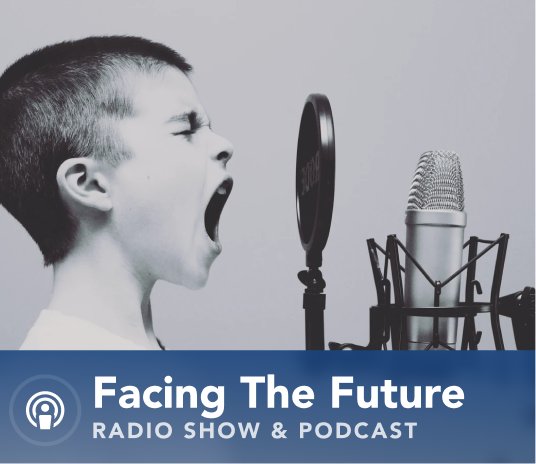The latest “Economist Mom” segment on Facing the Future, featured Bill Gale, Diane Lim and Robert L. Bixby. They discussed Gale’s new book, “Fiscal Therapy: Curing America’s Debt Addiction and Investing in the Future.”
“The book focuses on two major issues facing American society,” said Gale, a senior fellow at The Brookings Institution. “First, we have rising federal debt; second, we are lacking investments in crucial areas.”
“The book analyzes these issues and then proposes a 3-part solution,” Gale said.
Bixby, The Concord Coalition’s executive director, called the book “very timely.”
Gale said that debt and deficit levels over our nation’s history have increased in times of crisis, like war or recession, and then decreased when things would return to normal. “What we have now is a steady, chronic built-in imbalance between revenues and outlays,” he said.
“This imbalance is expected to rise over time,” he added. Our current path will eventually increase the national debt from its current level of nearly 80 percent of GDP to 180 percent.
“I propose that we have a target that the debt be 60 percent of GDP by 2050,” Gale said. “That would require us to raise taxes and/or cut spending by an average of 4 percent of GDP on an immediate, permanent basis.”
“These are enormous changes just to get us back to what you might call a normal steady state,” he said. “Congress, the president and really the American people have a long series of issues here that they will have to grapple with.”
Gale thought it unlikely that Congress would be able to tackle all the nation’s fiscal issues at once. “But the idea behind fiscal therapy is sort of like the idea behind physical therapy, which is, you work on these things one at a time, you get them better, you move to the next issue, you work on that one,” he said.
“Although the benefits are in the future, and sometimes hard to see, there are substantial benefits to fiscal reform,” Gale said.
Bixby noted that a 60 percent debt-to-GDP ratio would still be significantly higher than the 50-year average for the nation. Gale said there are several factors that affect what is a sustainable level of debt for the United States and help explain why he targeted a 60 percent ratio. One factor is how the government uses its funds.
“If the government follows the recommendations in the book, and shifts toward more investment in children, infrastructure, research and development, and so on, then we can sustain more debt because we are growing the economy.”
Gale said the impact of massive debt build-up and expanding budget deficits is gradual — the slow mortgaging of our future that reduces living standards for American families, reduces capital stock and increases indebtedness to foreign countries.
Lim, a principal at the District Economics Group who is engaged to Gale, said the book talked about many of the issues that matter to “Economist Mom.” She agreed that most fiscal issues were causing a slow deterioration, and she has been frustrated by the perception that low interest rates make reform unnecessary.
She said, “Many people say. . . ‘What is the problem, why are you guys still talking about the importance of fiscal sustainability when it’s so cheap to borrow?’”
Gale said, “Certainly interest rates have come down and certainly that helps the budget in the short run because it reduces interest payments.” But he said there’s a catch. “If you borrow money, you want interest rates to be low; if you’re a saver, you want interest rates to be high.”
There are larger concerns, however, like low interest rates reducing the urgency to address our deficit issues and government borrowing continuing to grow rapidly even when rates begin to rise and return to normal levels.
“And then, all of a sudden, we’re stuck with higher interest rates as well as a higher debt,” Gale added. “Which would then send net interest payments through the roof.”
Gale discussed his 3-part solution for the country’s fiscal problems.
“The first one is to reform Social Security and Medicare in ways that restore their long-term solvency, but also protect their anti-poverty role and their social insurance role,” he said. “The second part is to. . . ‘go long on America,’ and that is invest in children, invest in infrastructure, invest in research and development.”
“The third part is to raise and reform taxes,” Gale said. “This is a full-throated argument that we need to raise taxes.”
“We cannot get where we need to go with the current tax system,” he said. “The evidence suggests that higher taxes do not have to reduce the economic growth rate.” It largely depends on where you raise or collect those taxes, Gale said, and there are actually some growth-friendly taxes.
Gale dove deeper into solutions for issues related to health care, Social Security and domestic investment.
Hear more on “Facing the Future.” I host the program each week on WKXL, NHTalkRadio.com (N.H.), and it is also available via podcast. Join me and my guests as we discuss issues relating to national fiscal policy with budget experts, industry leaders, elected officials and candidates for public office. Past broadcasts are available here. You can now subscribe to the podcast on iTunes, Google Play or through RSS.





